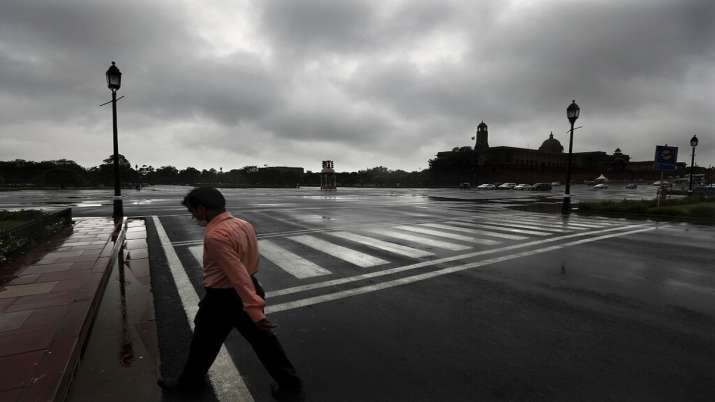
A man walking in the rain in New Delhi. Monsoon rains brought relief to the people from the scorching heat but at the same time water logging and traffic jams occurred in many parts of the city.
Monsoon may have arrived late in Delhi, but now the capital is getting waterlogged. The city has recorded 381 mm of rain so far this month, the highest in July and the second highest ever since 2003.
According to the India Meteorological Department (IMD), the Safdarjung Observatory, which provides representative data for the city, recorded 100 mm of rain in just three hours on Tuesday morning. This is also the highest rainfall in 24 hours in the month of July in eight years.
In 2013, Delhi received 123.4 mm of rain on July 21.
Despite the onset of monsoon on July 13, 16 days behind schedule, the capital has recorded 14 days of rain so far this month.
The most delayed monsoon in 19 years is now drenching Delhi, flooding low-lying areas and disrupting traffic for long periods.
According to IMD data, the Safdarjung Observatory has forecast 108 per cent more rainfall so far – 380.9 mm till July 27 against the normal 183.5 mm.
Generally, Delhi receives 210.6 mm of rainfall in July. The city had recorded 236.9 mm of rain last year, 199.2 mm in 2019 and 286.2 mm in 2018.
2017 recorded 170.5 mm of rain; 292.5 mm in 2016 and 235.2 mm in 2015.
read also | Rain in Delhi: Roads flooded, traffic jams in many parts of the capital
Delhi received 340.5 mm of rain in 2013. According to IMD data, the record so far in July 2003 is 632.2 mm of rainfall.
According to Mahesh Palawat, Vice President (Meteorology), Skymet Weather, the number of rainy days has decreased over the years, and extreme weather events have increased.
“Cities are recording more rainfall in less time. Earlier, 100 mm of rain used to fall in three to four days. Now, we are getting so much rainfall in just five-six hours,” he said.
Palawat said such spells of rain do not help recharge groundwater and cause flooding in low-lying areas.
“If it rains slowly over four to five days, water seeps into the ground. In the event of a heavy downpour, the rain water drains away quickly,” he said.
read also | It will rain in Delhi-NCR in next 2 hours, says IMD in latest forecast
.